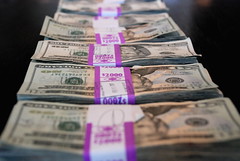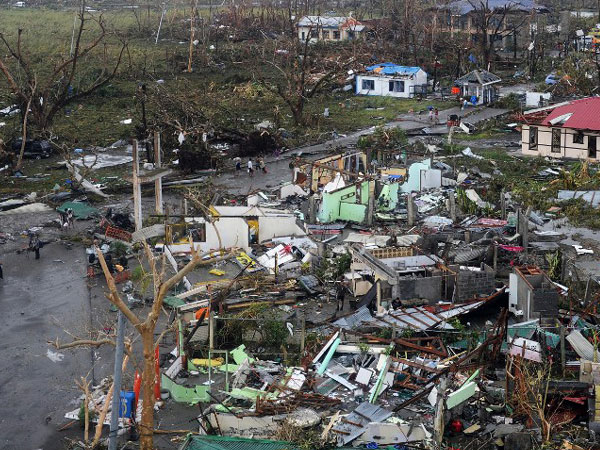 Finally, the first
ever ETF in the Philippines has arrived. First Metro’s ETF was listed last December
2, 2013 at Philippine Stock Exchange.
Finally, the first
ever ETF in the Philippines has arrived. First Metro’s ETF was listed last December
2, 2013 at Philippine Stock Exchange.
It’s ticker in the Philippine Stock Exchange is FMETF. It will be officially called First Metro Philippine Equity Exchange
Traded Fund Inc.
ETF means Exchange
Traded Fund. From the word itself, it is a fund being traded in the exchange.
To be more specific it is an equity fund being traded in the Philippine Stock
Exchange (PSE).
Historically, PSE
only has companies like PLDT, Globe, BPI, MBT, Ayala Land, Etc. on its list of
stocks traded in the exchange. Now, for the first time it includes an ETF as tradable
in the exchange.
From here on, aside
from seeing the usual tickers like BPI, MBT, TEL, GLO, ALI, etc. you’ll also
see the ticker FMETF in the ticker tape. Yes, this ETF is being bought and sold
just like a normal listed company.
FMETF is expected to replicate or mimic the PSEi as
closely as possible.
If PSEi goes down, FMETF NAVps should go down also. On the other hand, if PSEi
goes up, NAVps should go up also. It doesn’t intend to be defensive during market
declines or to outperform the Index.
The strategy is to
invest on PSEi stocks with approximately the same weights as in the PSEi.
There are 30 stocks
in the PSEi. The total market capitalization is 2.5 trillion pesos.
PLDT’s share of
that market capitalization is 11.26%, SM 9.84%, ALI 7.51% and so on and so
forth. Now, FMETF is going to invest its
fund in the same weights as the PSEi.
The fund shall
invest 11.26% on PLDT, SM 9.84%, and ALI 7.51% and so on and so forth.
In this strategy,
the fund is going to imitate the behavior of the PSEi; hence its NAVps shall
considerably replicate PSEi returns.
In fact, when you
draw a chart of FMETF, the graph will resemble almost exactly as that of PSEi.
Again, FMETF
objective is not to be defensive during market declines or to outperform the
market but rather to replicate the behavior of PSEi. If PSEi returns are high,
FMETF returns should also be high.
The fund however
cannot exactly match the behavior of PSEi. Trading and management costs will affect
the NAVps. Additionally, changes in PSEi composition and diminishing liquidity
may affect the NAVps and increase the tracking error slightly.
Overall, the fund
expects the maximum deviation from PSEi at 5% against its NAV.
|
1
|
PHILIPPINE LONG DISTANCE
TELEPHONE COMPANY "Common"
|
TEL
|
282,168,843,456
|
11.26
|
|
2
|
SM INVESTMENTS
CORPORATION
|
|
246,525,894,720
|
9.84
|
|
3
|
AYALA LAND, INC.
|
|
188,150,379,774
|
7.51
|
|
4
|
BANK OF THE PHILIPPINE
ISLANDS
|
|
152,105,353,582
|
6.07
|
|
5
|
ABOITIZ EQUITY VENTURES,
INC.
|
|
133,507,816,930
|
5.33
|
|
6
|
AYALA CORPORATION
|
|
131,201,830,656
|
5.24
|
|
7
|
SM PRIME HOLDINGS, INC.
|
|
130,519,963,196
|
5.21
|
|
8
|
BDO UNIBANK, INC.
|
|
110,555,944,946
|
4.41
|
|
9
|
INTERNATIONAL CONTAINER
TERMINAL SERVICES, INC.
|
|
105,389,876,494
|
4.21
|
|
10
|
UNIVERSAL ROBINA
CORPORATION
|
|
101,668,897,603
|
4.06
|
|
11
|
ALLIANCE GLOBAL GROUP,
INC.
|
|
101,055,107,323
|
4.03
|
|
12
|
METROPOLITAN BANK &
TRUST COMPANY
|
|
100,131,715,337
|
4
|
|
13
|
JG SUMMIT HOLDINGS, INC.
|
|
88,472,752,441
|
3.53
|
|
14
|
JOLLIBEE FOODS
CORPORATION
|
|
70,718,194,512
|
2.82
|
|
15
|
METRO PACIFIC INVESTMENTS
CORPORATION
|
|
53,018,331,178
|
2.12
|
|
16
|
GT CAPITAL HOLDINGS, INC.
|
|
52,290,000,000
|
2.09
|
|
17
|
ABOITIZ POWER CORP.
|
|
48,566,788,446
|
1.94
|
|
18
|
GLOBE TELECOM, INC.
|
|
46,669,155,200
|
1.86
|
|
19
|
ENERGY DEVELOPMENT (EDC)
CORPORATION
|
|
45,187,500,000
|
1.8
|
|
20
|
LT Group, Inc.
|
|
43,610,197,236
|
1.74
|
|
21
|
DMCI HOLDINGS, INC.
|
|
41,080,492,180
|
1.64
|
|
22
|
MEGAWORLD CORPORATION
|
|
38,203,981,542
|
1.53
|
|
23
|
ROBINSONS LAND
CORPORATION
|
|
32,889,835,741
|
1.31
|
|
24
|
MANILA WATER COMPANY,
INC.
|
|
29,704,905,011
|
1.19
|
|
25
|
SEMIRARA MINING
CORPORATION
|
|
29,625,750,000
|
1.18
|
|
26
|
BLOOMBERRY RESORTS
CORPORATION
|
|
27,842,703,625
|
1.11
|
|
27
|
SAN MIGUEL CORPORATION
|
|
23,510,748,885
|
0.94
|
|
28
|
PETRON CORPORATION
|
|
22,504,000,842
|
0.9
|
|
29
|
FIRST GEN CORPORATION
|
|
14,144,584,575
|
0.56
|
|
30
|
PHILEX MINING CORPORATION
|
|
14,141,531,542
|
0.56
|
|
|
TOTAL
|
|
2,505,163,076,973
|
99.99
|
Source: Pse
As part of its
reportorial requirements with PSE, FMETF is required to disclose its Net Asset
Value per share (NAVps) every day.
This daily
disclosure is important because it discloses the NAVps and the tracking error
of the ETF.
Since FMETF is a
listed fund, investors buy and sell shares of FMETF that do not correspond to
the NAVps of the fund. For example, on December 6, 2013 the NAV per share of
FMETF is 96.15 (see below PSE screen grab). The closing price of FMETF on same
date is 97.15. There was a difference of 1 peso.
FMETF is good
especially for investors who wants an exposure in the stock market but doesn’t want
to invest in individual stocks. Since FMETF is required to buy a basket of stocks
listed in PSEi, a single company cannot bring your investment considerably
down.
FMETF offers
exposure to various blue-chip companies. Imagine going to the supermarket,
filling up your trolley with TEL, SM, ALI, BPI, etc, queuing at the counter,
and paying your ‘grocery’ in a single transaction.
Since FMETF is
listed in the PSEi, it trades like a stock and you can see the daily change in
its NAVps.




